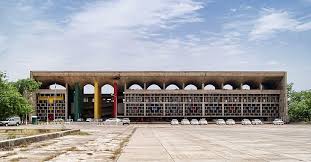Significant Updates from the Punjab and Haryana High Court

Introduction
The Punjab and Haryana High Court serves as a critical judicial institution in India, ensuring justice within the states of Punjab, Haryana, and the Union Territory of Chandigarh. Recent developments in this court have drawn considerable attention due to their implications on legal precedents and public policy. As we navigate through a rapidly changing legal landscape, understanding these updates can help the public and legal practitioners alike.
Recent Rulings and Highlights
In recent weeks, several noteworthy cases have come before the Punjab and Haryana High Court, reflecting the court’s role in addressing pressing social and legal issues. One of the most talked-about rulings involves the validation of certain provisions of the Punjab State Scheduled Caste and Backward Classes (Reservation in Services) Act, which aims to ensure equitable opportunities for marginalized communities in government services.
Furthermore, the court has been active in hearing petitions related to farmer rights and land acquisition. A landmark ruling on the rights of farmers concerning land leases has set a precedent for future cases, highlighting the court’s commitment to safeguarding agricultural interests amid growing urbanization.
Legal Reforms and Public Interest Initiatives
The Punjab and Haryana High Court continues to embark on various initiatives aimed at improving the legal framework and accessibility to justice. The court recently launched a digital platform to facilitate online hearings and document submissions, significantly reducing the backlog of cases and expediting the judicial process. This reform is part of a broader push towards digitalization in the Indian judicial system, reflecting a response to the COVID-19 pandemic’s challenges.
Moreover, the court has introduced public interest litigations (PILs) addressing environmental issues and the welfare of marginalized groups, showcasing its proactive stance in societal concerns. Cases regarding pollution control and women’s rights are also on the rise, with the court emphasizing the importance of a balanced approach to development and environmental sustainability.
Conclusion
The Punjab and Haryana High Court remains a vital institution for upholding the rule of law and ensuring justice in the region. As it addresses contemporary challenges through progressive rulings and reforms, the impact of these decisions will resonate within the legal community and beyond. The ongoing developments in this court are critical indicators of the evolving nature of justice in India, offering a glimpse into how legal systems can adapt to meet societal needs. For legal practitioners and the public alike, keeping abreast of these changes in the Punjab and Haryana High Court is essential for navigating the future of law in this vibrant region.









